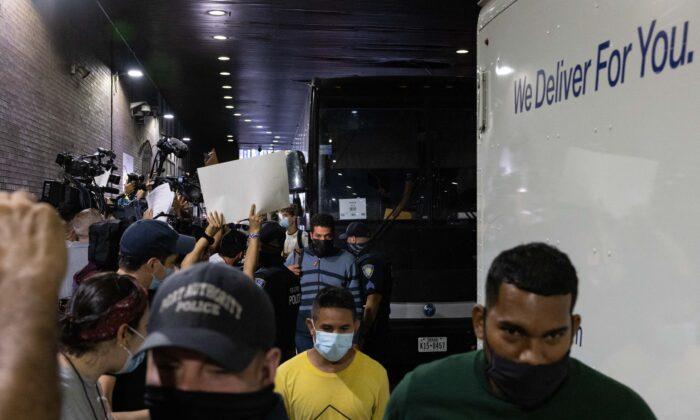An investigation conducted by the Immigration Reform Law Institute (IRLI) has found that sanctuary states in the United States are dishing out millions of dollars’ worth of taxpayer money to illegal immigrants.
“If, for example, New York revamped their program and made it permanent; the D.C. City Council enlarged its fund; and California successfully implemented its own proposal, American taxpayers would be faced with an utterly staggering price tag of roughly $4,350,000,000 every year—to reward illegal aliens for violating our immigration laws and winding up unemployed on American soil,” the report says.
New York launched the Excluded Workers Fund in 2021, providing $2.1 billion to over 128,000 illegal aliens.
In December 2020, legislation passed in Colorado granted $5 million for the Left Behind Workers Fund intended for illegal immigrants.
Last year, the District of Columbia disbursed $15 million to “excluded workers,” which mostly consisted of the illegal alien population.
In California, lawmakers introduced the Excluded Workers Pilot Program, which if signed into law will disburse $300 per week to illegal aliens in the state for 20 weeks.
Sanctuary Community Crimes, Inflation Worries
A report published by the IRLI in August deemed New York City to be “America’s most dangerous sanctuary community.” Los Angeles, Chicago, Philadelphia, and San Francisco made up the remaining top five.“Data overwhelmingly shows that sanctuary policies lead to more crime, fear, and death. The leaders of these communities should not escape accountability for the damage they have caused. Their residents deserve much more.”
Funds are being distributed to illegal aliens at a time when American citizens are struggling with high inflation. The annual inflation rate has remained above 7.5 percent for every month this year, with elevated prices forcing American households to make tough budgetary decisions.
Another survey by LendingClub found that 63 percent of American citizens were living paycheck to paycheck as of September. Of these people, 66 percent have reduced spending and 49 percent have changed their shopping preferences.





